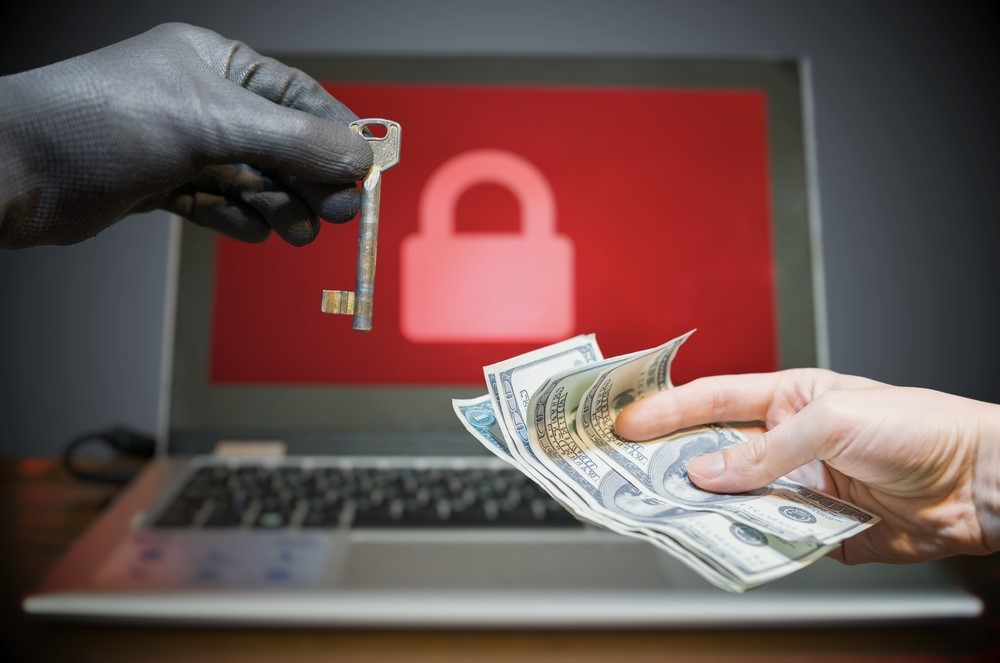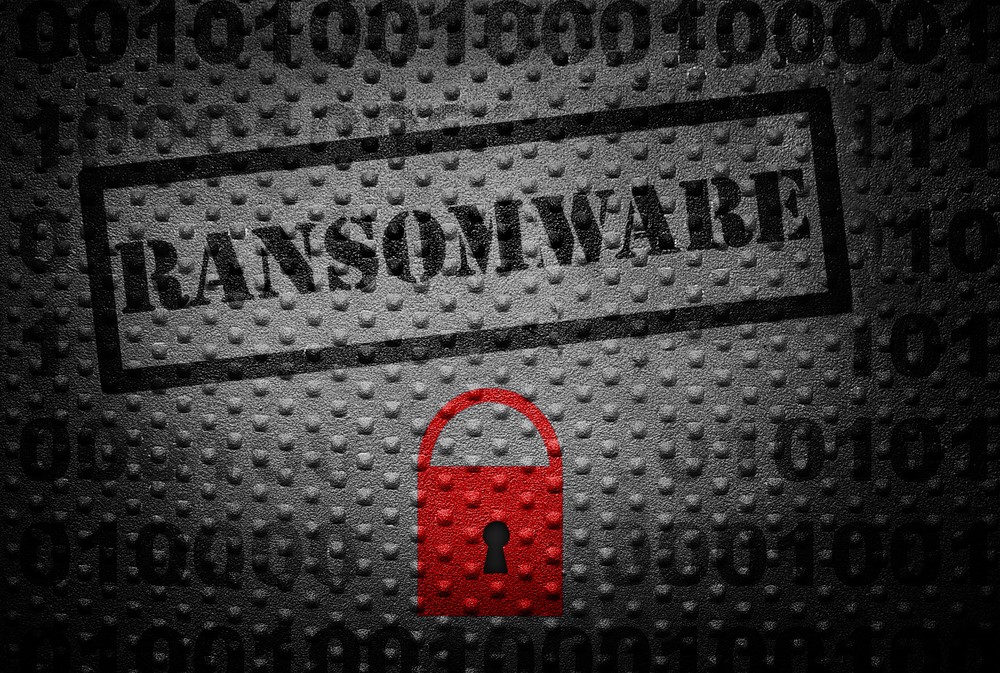This post is to show how to evade anti-virus detection using the Veil framework, which is a set of tools built for penetration testing.
You get a very lethal combination of challenges when you combine encryption with malware. This is a computer virus that is called "ransomware." This type of virus is part of the "crypto virology" field of research.

Ever considered what all the ransomware buzz is about? You caught wind at the job or read it in the news. Indeed, in case you're interested to get familiar with everything to think about ransomware, you've gone to the perfect spot. We'll enlighten you, what ransomware is, how it is created, how it works, and what to do to ensure against it. But first, let’s understand what ransomware is.
What is Ransomware?
Ransomware is a form of malware that encrypts a victim's system. The perpetrator then demands the victim to pay for data recovery. It is one of the greatest security issues on the internet and one of today's largest forms of cybercrime. Ransomware is a malicious malware that encrypts files and documents all over a network, including servers, from a single PC to a full network. Victims often have a few options, either through paying ransoms to the criminals behind the ransomware they may regain access to their encrypted network or restore the backup, or hope that a decryption key is generally available.
The ransomware functions with the code that encrypts user information on the infected machine or host. The information includes user files such as notes, images, video content, and even sensitive records. The ransomware attacks your computer files and uses an encryption algorithm such as RSA to prevent the file from being accessible. Only by paying a ransom to a Threat Agent through the following instructions encoded in the encrypted files does the user access them. So it is called ransomware since it involves a form of payment to solve the problem.
The payment is also needed in cryptocurrencies, Bitcoin for the most part. A more malevolent form of ransomware will give users a payment deadline if they don't, the data may be lost forever. Only with a decrypting key or a strong computer can the file be accessed if it is encrypted. For most users, this is simply not available so attacks like this are a very serious threat.
The ransomware also seeks to exploit other machines on the network to which the infected host is linked. It also has worms like property. It is also regarded as a "cryptoworm."
How Ransomware Works?
1.
[attacker > victim] A key pair is created and the corresponding public key is inserted in the malware by an attacker. It launches the malware.
2.
[victim > attacker] The malware produces a random symmetrical key and encrypts the data of the victim to execute ransomware assault. It uses the malware public key for symmetric key encryption. This is known as hybrid encryption, which results in the symmetrical ciphertext of data of the victim and the small asymmetric ciphertext. To prevent recovery, it zeroes the symmetric key and the original plaintext data. It sends the user a message which includes the asymmetric ciphertext and how the ransom is paid. The victim sends the offender with the asymmetric ciphertext and e-money.
3.
[attacker > victim] The attacker collects the money and decrypts the asymmetrical ciphertext by using a personal key from the attacker to give the victim the symmetrical key. With the required symmetrical key, the victims deciphered the encrypted data and thus completed the attack.
You can have a look at the "Ransomware Analysis using Ghidra" video from Hacker Associate.
How Ransomware is created?
Here we are revealing 3 forms of creating your custom ransomware. Let’s start with the first method.
Creating Ransomware With TDK (Trojan Development Kit)
You don’t need to have mad coding skills, hacking skills, or even a laptop for that matter. All you need is an Android Smart Phone.

While (for obvious reasons), we will not include links to download, more fierce readers can download TDK from various pirating forums free of charge. The interface provides a user-friendly interface to allow you to create customized ransomware. Without writing even a line of code you can create the entire malicious program on the smartphone itself.
Creating Ransomware With Atom Ransomware
Atom Ransomware, formerly named Shark, allows you from their site to download the malware. They also have step-by-step guidance on how to configure and use it.
Any wanting creators of ransomware can visit their website and click on a download button to download a Payloadbundle.zip zip file. This zip file includes the builder, the warning message, and the file executable.
You can start tailoring the details immediately after you download the Atom payload builder. Specify the Bitcoin address, the price, and the message to be shown to your victim. You may also pick the folders, the files to be locked, and the countries into which you have to penetrate.

Atom developers argue their ransomware is undetectable by AV tools, uses fast and powerful coding algorithms, and supports many languages. You can pick the directories and files to infect, the target countries, the amount of ransom to request in each region, and the E-mail address that sends alerts. The site is very professional and the Shark Ransomware Project provides a variety of examples of configuration.
The payment is first directed to the developer here who receives 20% of the payment and then 80% to the specified Bitcoin address. The decryption key is produced once the ransom is received.
Creating Ransomware With TOX Ransomware Construction Kit
Since May 2017, it is available at Dark Web. You can use this tool to build Windows OS ransomware including all mobile devices that use the platform.
The Tox page states: "We developed a virus which, once opened in a Windows OS, encrypts all files. Once this process is completed, it displays a message asking to pay ransom to a bitcoin address to unlock the files."

Anyone interested in TOX would be able to sign up for their ransomware services. The developers claim that hackers can produce ransomware in three "simple" steps through their kit:
The ransom will be determined.
Enter why the program is created.
Captcha submission.
How can you get Infected?
When suspect and unaware users make a mistake (like you), Ransomware typically penetrates the machine.
These two errors are the most common:
a.
Visit unknown websites without testing if they are confident.
Visit unknown websites without verifying whether they have credibility. Some websites that are malicious or compromise and trigger an instant infection after you have access to them. You don't have to download anything in this situation, the site would automatically do.
b.
Downloading attachments without scanning them.
Ransomware may also be downloaded by other malware or dropped as payloads. Some Ransomware is considered to be distributed as spam mail attachments, downloaded from tampered pages or dropped to compromised networks by exploit kits.
What to do if you’re infected?
The number one rule is to never pay the ransom if you are infected. All that does is to encourage cybercriminals to conduct more attacks on you or anyone else. (This is now supported by the FBI.) However, some encrypted files can be retrieved with a free decryption kit.
Of course, not all ransomware had decrypters built for them, mostly because the ransomware uses complex and sophisticated algorithms of encryption. And even though there is a decryptor, if this is the correct version of the malware, it is not always obvious. Using the wrong Decryption script, you do not want to further encrypt your files. Therefore, you must be very aware of the ransom message or maybe ask the advice of a professional in security / IT before you try something.
Other ways to cope with a ransomware infection include installing and conducting a scan to delete the threat. You may not be returning your files, but you can be assured of clean up an infection. A complete device restore may be for screen-locking ransomware. You should try running a scan from a bootable CD or USB drive if that doesn't work.
You will have to remain especially alert if you want to try to halt ransomware in motion. Shut it down and isolate it from the internet when you see your machine slowing down for no apparent cause. If the malware is still active after booting again, it can not send or receive command and control server instructions. This ensures that the malware can be idle without a key or way of collecting payment. Install the antivirus and conduct a complete scan.
6 Tips for Prevention of Ransomware
Backup
Have a recovery mechanism in place so you can not permanently lose your details with ransomware infection. The safest option is to make two back up copies, one to be stored in the cloud and one to be physically stored (portable hard disc, thumb drive, extra laptop, etc.) When you're done, detach them from your machine. If you unintentionally delete a vital file or have hard drive failures, your backup copies would also be convenient.
Use solid antivirus software
To protect your device from ransomware. Do not disable 'heuristic features' because they can help find samples of ransomware that were not yet found officially.
Keep your system updated
Download the latest update of your operating system ( OS) or software. And if you have the chance to automatically upgrade the program, take it.
Trust no one
Any account can be jeopardized and malicious links from friend's accounts to social media, coworkers, or a partner online. Never open attachments in anybody you don't know about emails. Cybercriminals also distribute fake e-mails that look similar to online shop, bank, police, court, or tax collection agencies and attract recipients from a malicious link to release their malware into the system.
Enable show extension option
The detection of potentially malicious files would be made much easier. Keep away from plugins such as '.exe' and '.vbs' or '.scr.' Scammers can disguise a malicious file as a video, picture, or document with various extensions, such as hot-chics.avi.exe, or doc.scr.
Disconnect from network
You should automatically disconnect from the Internet or other internet connectivity when you find a rogue or unknown process on your computer (for example, home Wi-Fi) – thereby preventing the infection.
Conclusion
Ransomware is a popular product in the malware market. It locks your computer or files and demands a payment in order the restore them and most importantly it works. We can say that ransomware is here to stay, the best way to stay protected is to avoid getting infected.
Users also read:
How to perform Man in the middle attack with Ettercap
Man in the middle attack allows the attacker to eavesdrop between clients, servers, and people. This attack may include HTTPS connections, SSL/TLS connections, and more. In this tutorial, I am going to use Ettercap to perform Arp poising in the man-in-the-middle attack with the help of Wireshark.
How To Access Android Phone Camera Using Kali Linux
In this tutorial, we will take a picture from the victim's smartphone camera without their knowledge. However, please note that this is post is for educational purposes and I have no responsibility for any illegal activity.

